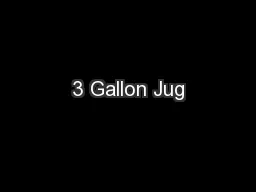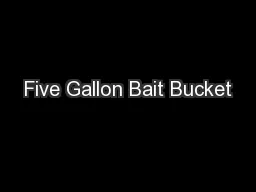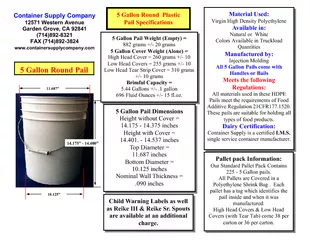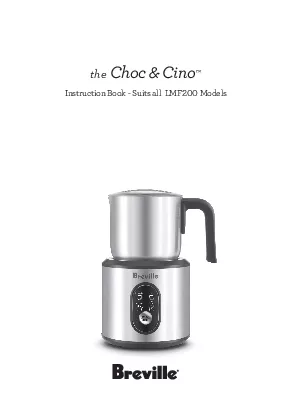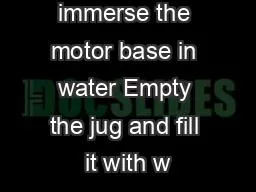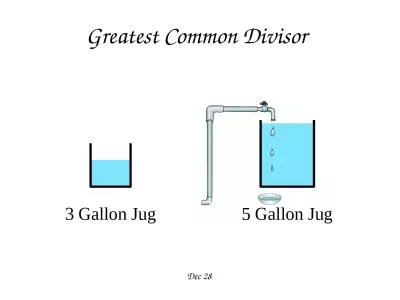PPT-3 Gallon Jug
Author : celsa-spraggs | Published Date : 2016-03-26
5 Gallon Jug Greatest Common Divisor Dec 28 This Lecture Quotient remainder theorem Greatest common divisor amp Euclidean algorithm Linear combination and GCD
Presentation Embed Code
Download Presentation
Download Presentation The PPT/PDF document "3 Gallon Jug" is the property of its rightful owner. Permission is granted to download and print the materials on this website for personal, non-commercial use only, and to display it on your personal computer provided you do not modify the materials and that you retain all copyright notices contained in the materials. By downloading content from our website, you accept the terms of this agreement.
3 Gallon Jug: Transcript
Download Rules Of Document
"3 Gallon Jug"The content belongs to its owner. You may download and print it for personal use, without modification, and keep all copyright notices. By downloading, you agree to these terms.
Related Documents

